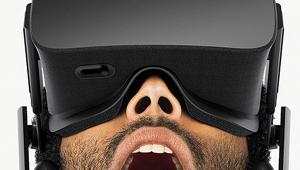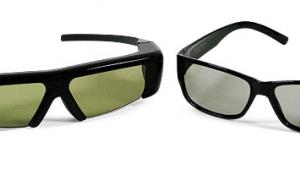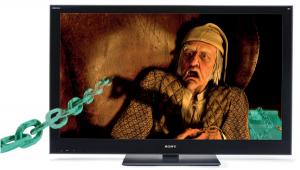Orson Scott Card on 3D

His main beef with Alice is that Burton tried to update a classic tale in a vain attempt to improve upon Lewis Carroll, which failed miserably in his view. I couldn't disagree more. I thought the basic story concept of Alice was brilliant, and the 3Dwhich was applied in post-production, not during shootinglooked quite good in the Imax presentation I saw. (Tom didn't see it in Imax and thought it looked pretty poor, but shortly after that, he and I saw clips on a Samsung 3DTV, and he said it was far better than he remembered in the commercial theater.)
Card's thoughts on 3D in general are equally unequivocal. He says that, even though many of the technical problems have been solved, 3D is "the most worthless film technology ever developed, with the possible exception of smell-a-vision."
Card says that the "gimmick of 3D" is based on binocularitythat is, seeing the world through two eyes spaced a certain distance apartwhich is entirely correct. But he goes on to say that, in terms of evolution, the purpose of having two eyes is not binocularity, but redundancy, so that if you lose an eye, you can still see. According to Card, we gauge distance primarily via focus, and binocularity is simply a byproduct of the fact that two eyes cannot occupy the same space.
I don't buy that. Focus is no doubt important in gauging distance, but it's far more difficult to do so accurately without binocular vision. Also, consider predator and prey animalsmost predators' eyes face forward so they can accurately gauge the distance to their next meal, while most prey animals' eyes are on the sides of their head so they can see predators coming from just about any direction. So two eyes are clearly more important than simply having a spare.
Speaking of focus, Card rightly points out that, while each of us can independently focus on anything at any distance in the real world, the focus in a movie is fixed for all viewers. Also, whereas far-away objects look blurry when we focus on nearby items in the real world and vice versa, everything is in focus in a 3D movie no matter where an object is located, which is completely counter to our normal experience and thus renders 3D movies less realistic.
He might have a point here, especially when it comes to animated movies, which comprise the majority of recent 3D titles. If everything is always completely in focus at any distance, that is indeed unnatural and could contribute to the sense of unease that some people feel when watching such a 3D movie.
However, Card loses me when he says, "The old-fashioned 2D movie is much, much closer the way we see the real world, because the lens focuses the way our eyes dowhen one thing is in focus, farther and nearer things are less in-focus." This is not necessarily true, because it depends entirely on the camera's depth of field, which can be increased or decreased at will, something the human eye cannot do. This is equally true for live-action 3D shots, so his argument doesn't hold up in this case.
Card calls 3D "a medium so unreal that we will never really forget ourselves and fall into the audience-trance that makes storytelling arts an essential part of human life. 3D makes you watch the film instead of forgetting the film and watching the people." My own experience belies thisI certainly fell into the "audience-trance" as I watched Alice. However, I didn't when watching Avatar, but that was because I was unconvinced by the story and characters, not because it was 3D. Even so, I did forget I was watching a 3D movie at some points.
He ends with a sentiment shared by many: "And even when they don't give me a headache, I hate the glasses. When am I ever going to lean back in my chair at home, ready to watch a film on DVD, and be glad to put on a special pair of glasses? I don't think 'never' is too strong a word." I doubt I'll ever want to watch everything in 3D, but "never" is, in fact, too strong a word for me.












































